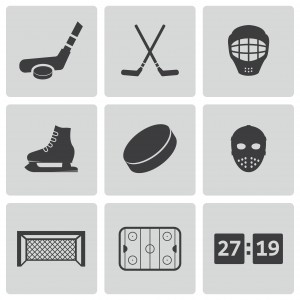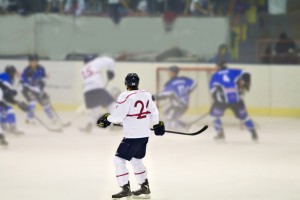 It seems pretty reasonable to assume about 90% of visitors to Perani’s (both on the web and in stores) are players or family members well versed in the sport of hockey. Odds are you play hockey, your child, another loved one or someone you’re buying a gift for already knows the ins and outs of the game, but for those of you brand new to the sport, we wanted to offer up a quick online crash course, so without further ado, here is Hockey 101 from your friends at Hockey World.
It seems pretty reasonable to assume about 90% of visitors to Perani’s (both on the web and in stores) are players or family members well versed in the sport of hockey. Odds are you play hockey, your child, another loved one or someone you’re buying a gift for already knows the ins and outs of the game, but for those of you brand new to the sport, we wanted to offer up a quick online crash course, so without further ado, here is Hockey 101 from your friends at Hockey World.
To be very basic, let’s start with the fundamentals – each team has six players (three forwards, two defensemen and one goalie) on an 85’ x 200’ sheet of ice that consists of three zones: a defensive zone, attack zone and a neutral zone. Instead of a ball like most sports, hockey uses a puck. The puck is a vulcanized rubber disc (1-inch thick and 3 inches in diameter, weighing approximately 6 ounces). Fun fact: hockey pucks are frozen prior to the game as it prevents excess bounce around the rink.
One of the most comprehensive Hockey 101 posts already out there is one from the Buffalo Sabres which includes common hockey terms, medical glossary, and how to figure/score.
Common hockey terminology
Click the link above for a full list of common hockey terms, but here are a few we pulled from their site to start you off with:
- BODY CHECK: Use of the body on an opponent. It is legal when the opponent has possession of the puck or was the last player to have touched it.
- DEKE: To fake an opponent out of position.
- FACEOFF: The dropping of the puck between one player from each team to start or resume play.
- FREEZING THE PUCK: To hold the puck against the boards with either the stick or skate to get a stoppage of play.
- HAT TRICK: The scoring of three or more goals by a player in one game. A natural hat trick occurs when a player scores three consecutive goals.
- POWER PLAY: A power play occurs when a team has a one- or two-man advantage because of the opponent’s penalties.
- SLAP SHOT: Hitting the puck with the blade of the stick after taking a full backswing.
Then there’s penalties…
 And then there are penalties – a common and often loved part of the sport. Some of the biggest hockey fans started watching the sport for the penalties and fights alone, but soon learned to love the sport and all around intensity.
And then there are penalties – a common and often loved part of the sport. Some of the biggest hockey fans started watching the sport for the penalties and fights alone, but soon learned to love the sport and all around intensity.
For a better understanding of hockey penalties, use this handy link from the Florida Panthers website that even includes diagrams from their mascot (Stanley C. Panther) so you can recognize what the referee is signaling (it’s pretty awesome, go check it out) during a game.
Already know a ton about hockey? Prove it – leave us a comment with your favorite rule or fact about hockey or even trivia about your favorite team in the comments below. Or if you have questions about a hockey term or something you hear often, leave us a comment and we’ll either respond with the answer or write a new blog post about it, just for you!
Leave a Reply